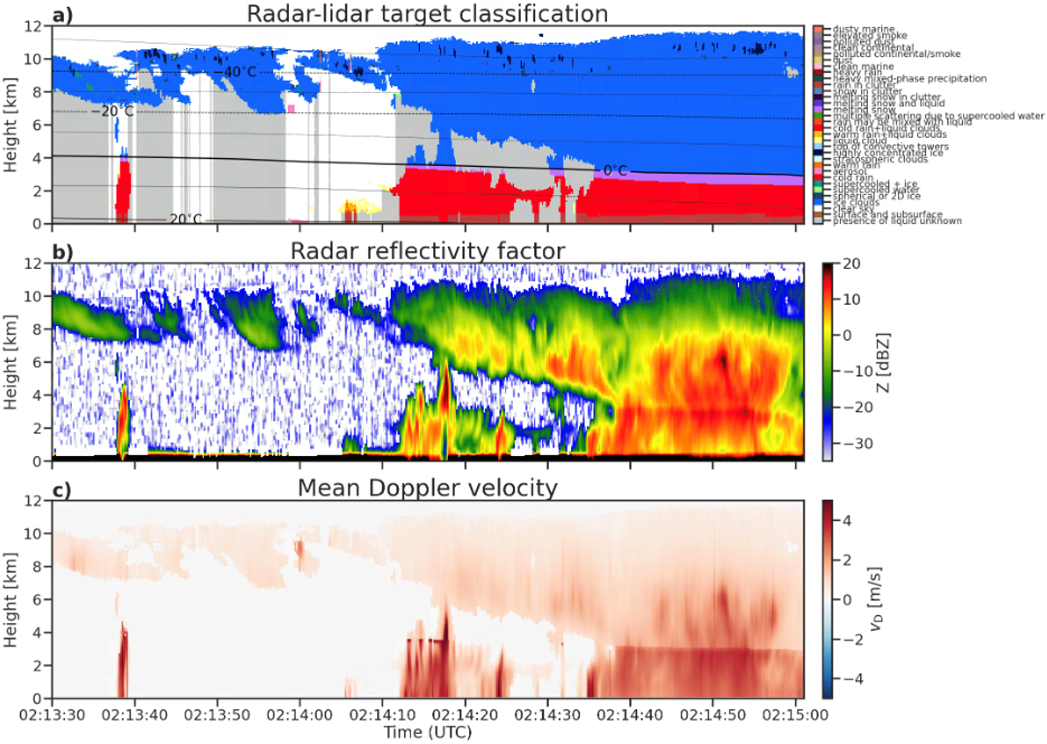Lead Supervisor: Chris Westbrook, Department of Meteorology, University of Reading
Email: c.d.westbrook@reading.ac.uk
Co-supervisor: Shannon Mason, European Centre for Medium-range Weather Forecasts (ECMWF) and National Centre for Earth Observation, University of Reading
Numerical weather prediction models rely on mathematical representations of the characteristics of rain and snow, and the physical processes that control them. The state of the atmosphere in weather forecasts can be highly sensitive to these representations, for example, about the way that the size distribution of hydrometeors can evolve, and processes that control their evolution such as growth rates and fall speeds. These microphysical representations are often highly simplified—either based on field campaigns carried out over limited areas, or even using fixed global values. Scientists at ECMWF are in the process of implementing more sophisticated models for how the size and number of raindrops and ice particles vary due to microphysical processes in the forecast model. This will require more information about the properties of clouds and precipitation, their fallspeeds, and how they vary across different weather regimes.
In 2024, the EarthCARE satellite (Wehr et al, 2023, Illingworth et al. 2015) will launch, and begin providing the first global high-resolution measurements of the vertical velocity of raindrops and ice particles from its novel Doppler cloud radar. ECMWF scientists are central to the development of algorithms for estimating the properties of clouds and precipitation from EarthCARE observations (Mason et al. 2023), and to the real-time assimilation of EarthCARE measurements into global weather forecasts. EarthCARE presents a timely opportunity to provide the global observations needed to inform the improved representation of rain and snow in the ECMWF forecast model.
In this project you will use novel data from EarthCARE to characterise the vertical motion in global clouds and precipitation regimes for the first time. This information will be combined with insights into the microphysical properties of raindrops and ice particles from EarthCARE retrievals to better understand the processes controlling these characteristics, and evaluate their representation in the ECMWF forecast model. Working in placements at ECMWF with the scientists who are developing the improved model physics, you will evaluate the sensitivity of weather forecasts to changes in rain and ice fallspeed assumptions and characteristics, and may ultimately leverage your physical insights to inform improvements to the weather forecast model.

Figure 1 An example cloud and precipitation scene detected by EarthCARE’s predecessor satellites CloudSat and CALIPSO, featuring a combination of ice cloud and rain regimes. (a) The synergy of radar and lidar measurements informs the classification of cloud, precipitation and aerosol types; (b) the radar reflectivity measured by CloudSat; and (c) simulated EarthCARE Doppler velocity (measurements not yet available), illustrating how vertical motion provides insights into the sizes of raindrops and the size, density, and structure of snowflakes.
Training Opportunities
The project would involve several placements to ECMWF (at its Reading site, about 2 miles from campus) for a period of up to 3 months. These would provide the student with invaluable experience working in an operational research environment, building both team-working skills in the Physical Processes group, and the technical skills of modifying and running a large and complex model on a supercomputer and analyzing the large datasets produced.
Student Profile
This project would be suitable for students with a degree in physics, mathematics or a closely related environmental or physical science.
References
Illingworth, A. J., and Coauthors, 2015: The EarthCARE Satellite: The Next Step Forward in Global Measurements of Clouds, Aerosols, Precipitation, and Radiation. Bull. Amer. Meteor. Soc., 96, 1311–1332, https://doi.org/10.1175/BAMS-D-12-00227.1.
Mason, S. L., Hogan, R. J., Bozzo, A., and Pounder, N. L., 2023: A unified synergistic retrieval of clouds, aerosols, and precipitation from EarthCARE: the ACM-CAP product, Atmos. Meas. Tech., 16, 3459–3486, https://doi.org/10.5194/amt-16-3459-2023.
Wehr, T., Kubota, T., Tzeremes, G., Wallace, K., Nakatsuka, H., Ohno, Y., Koopman, R., Rusli, S., Kikuchi, M., Eisinger, M., Tanaka, T., Taga, M., Deghaye, P., Tomita, E., and Bernaerts, D., 2023: The EarthCARE mission – science and system overview, Atmos. Meas. Tech., 16, 3581–3608, https://doi.org/10.5194/amt-16-3581-2023.

